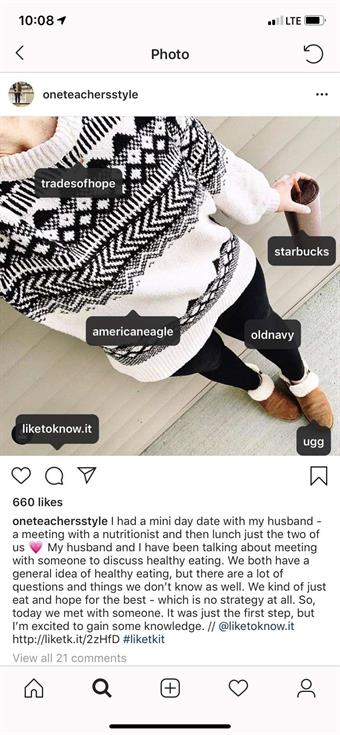3 Top Brand Strategies for #SocialCommerce in 2019

From Amazon's influencer program to the hiring of reality TV stars to hawk product, social commerce barely resembles what retailers and ecommerce vendors thought it would be - which might actually be a good thing.
While Facebook bet early on Facebook Shop and then Facebook Marketplace to encourage transactions on its network, Twitter at one point added a "buy button" for tweets and Pinterest quickly made Pins shoppable, it's Instagram (a Facebook-owned network) that became the shining social commerce star.
In fact, Instagram could account for 70 percent of Facebook's new revenue by 2020, and there's a few reasons why. The following strategies are part of Instagram's success and how brands are utilizing social commerce in impeccable ways.

1. Individuals (Over Brand)
It's reported that influencer marketing - when a company leverages a person to share their product or service with their social following - shows 11 times the return on investment (ROI) of traditional advertising. People are personable and relatable, brands (despite how hard they try) can appear cold and calculating.
While there are some brand ramifications when social influencers (or even employees) go rogue, individuals are far more trusted than companies (even as imperfect beings).
Instagram's social commerce success encompasses individual content creators and savvy brands have partnered with everyone from teachers (see image) and moms to celebrities and Instagram models to share their products with their followers using platforms such as LIKEtoKNOW.it, rewardSTYLE, Popular Pays and Social Bluebook as well as actual Hollywood agents. Back in 2014, I wrote about Nordstrom's use of popular 'mom' bloggers to share their content. By 2017, it was reported four out of every five of Nordstrom.com's mobile web visits came from referral traffic driven by an influencer. Now, that's a return on investment.
Take a page from top Instagram brands and start tying your brand to people who have the engaged audiences you seek, regardless of company size or type. Who says B2B, for example, can't tap influencers to share their content?

2. Inspiration (Over Promotion)
Episerver data found that roughly 10 percent of consumers visit a brand's website for the first time to find inspiration (e.g., style or usage guidance, recommendations from brands, etc.).
With Instagram being such a highly visual network, it is likely these numbers are much higher for social referrals. What top brands do on social, is provide an editorial-like experience to share helpful information that followers can use to make purchasing and planning decisions. What even better brands do, is leverage influencers to share inspiration. In the screengrab, former ABC Bachelorette Jillian Harris shows how she is styling products from Nordstrom versus Nordstrom telling her (or her followers) how to style.
3. IRL (Over Posed)
IRL (or "in real life") images and videos are the crux of effective social commerce strategies.
While not every brand will buy into the power of social media influencers (for many reasons), they should bet on showcasing their products and services in real-life environments. Yes, there is some degree of "framing" involved on social, as it shows off the best parts of a brand and even our personal lives but demonstrating how a product or service works "in the wild" should take precedence over posed images and videos. With product images being a top must-have item on digital commerce websites, social commerce should provide yet another way to view items.
A popular new offering comes from companies that take photos from a person's phone and turns them into wall art. Mixtiles is one such company and uses a "real life" person to show the process while Frambridge takes a more studio approach. In any case, it's inspirational and appears to be IRL.
 |
 |
#SocialCommerce and You
On average, American adults spend over 11 hours per day listening to, watching, reading or generally interacting with media (source). They are quickly judging product and services with quick scrolls on their phones. When brands can tap into the power of people consumers do trust, engage with them in genuine ways and demo their offerings in real-world settings, shoppers are more likely to slow down and take a look. Of course even with all the changes to social commerce, some universal website truths prevail: landing pages must match the original content that interested a person, reviews make or break sales, device-friendly experiences always win, a PayPal option will never hurt at checkout, security seals and fast websites reduce anxiety, and expectations for quick/easy checkouts, shipping and returns must be met.
About the Author: Amberly Dressler is on the brand communications team at Episerver. She has 12 years of experience in editorial and marketing communications, including a long tenure here at Website Magazine. Follow her on Twitter @amberlydressler.

Subscribe to Our Newsletter!
Latest in Social Media










